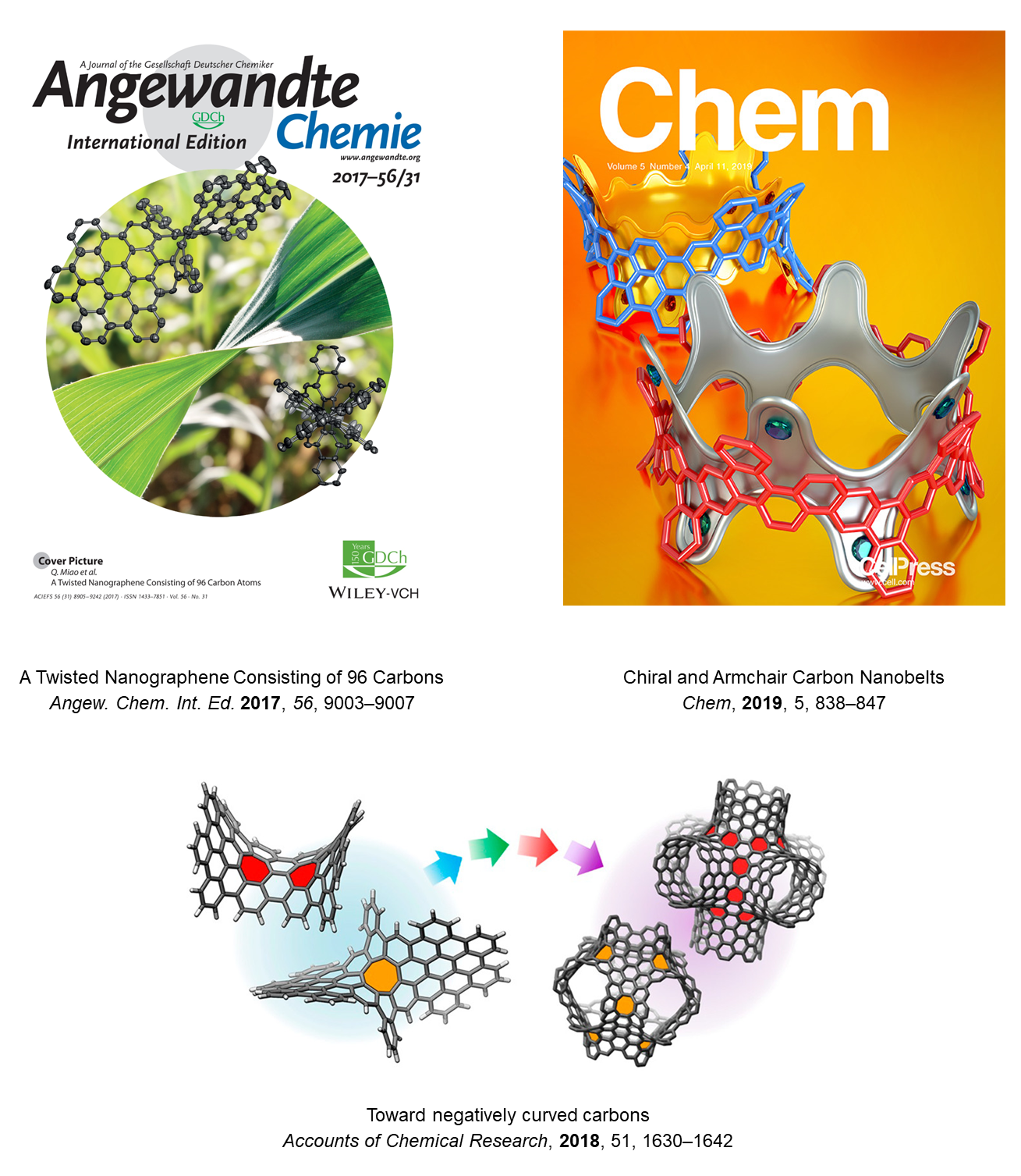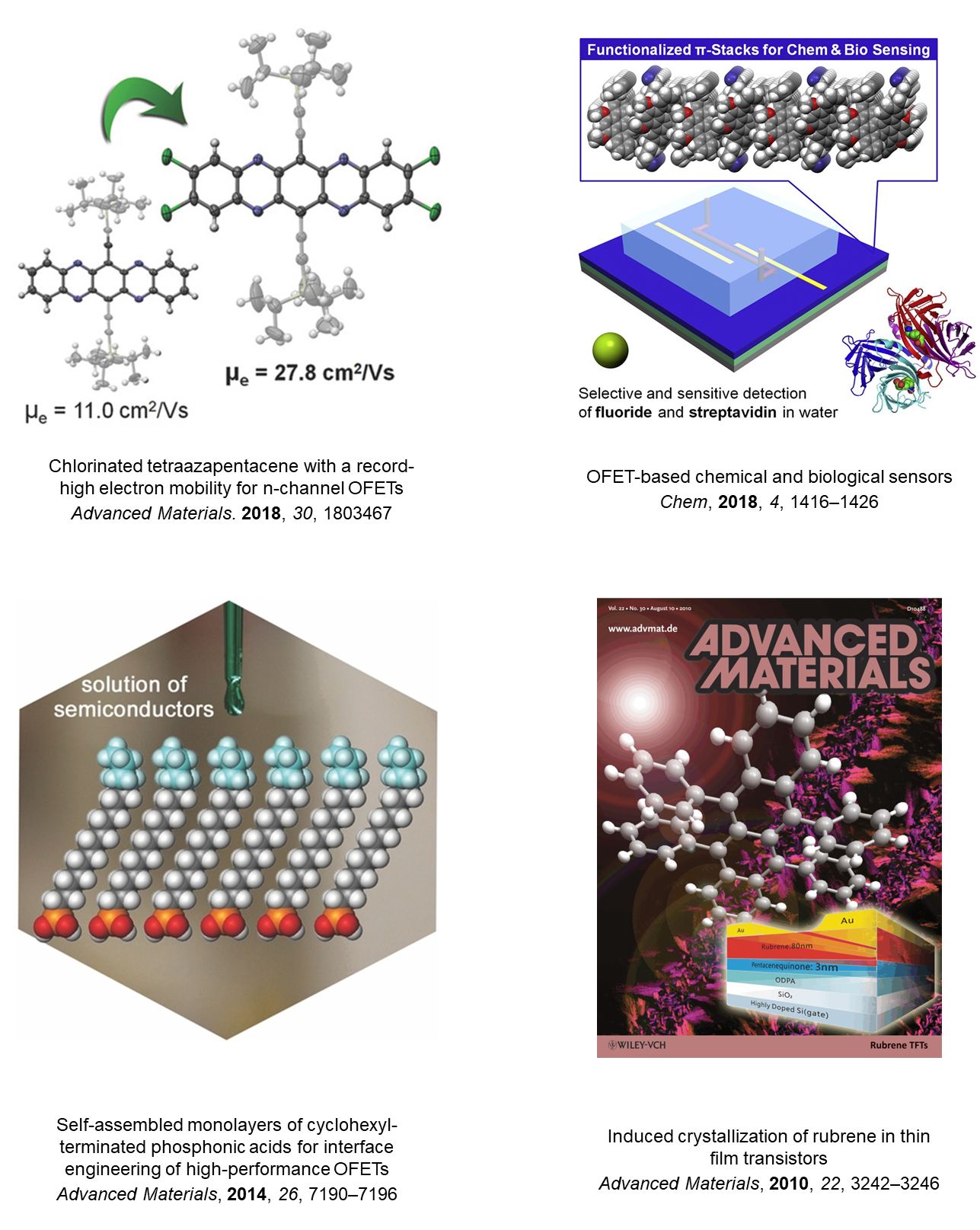Research
Our laboratory designs and synthesizes novel polycyclic aromatic molecules with interesting structures and useful applications, exploring novel molecular nanocarbons and developing high-performance organic semiconductor materials and devices using tools from organic synthesis, supramolecular chemistry and surface chemistry.
1. Curved polycyclic aromatics and topologically unique molecular nanocarbons
Curved polycyclic arenes, which are molecular nanocarbons of defined curvature, play an important role in bottom-up approaches to theoretical carbon allotropes or known carbon allotropes that, however, cannot be synthesized in a precise manner. Two groups of curved polycyclic arenes of particular interest to us are negatively curved nanographenes and carbon nanobelts. Scholl Reaction is the key reaction in the synthesis of these molecules.
Negatively Curved Nanographenes
By introducing seven- and eight-membered rings to polycyclic aromatic frameworks, we designed and synthesized a series of negatively curved nanographenes, which are segments of theoretical carbon allotropes of negative curvature.
Carbon Nanobelts
Carbon nanobelts, which are belt-shaped polycyclic aromatics consisting of fused benzene rings, can in principle serve as templates or precursors for chirality-specific synthesis of carbon nanotubes, which remains the top challenge in science of carbon nanotubes and a bottleneck limiting their applications. Using Scholl Reaction, We synthesized the first chiral carbon nanobelt, a new type of armchair carbon nanobelt, and also new types of zig-zag carbon nanobelts.

2. Organic semiconductors and organic electronic devices
Molecular Engineering:
We design and synthesize novel organic semiconductors with control of electronic structures and molecular packing in the solid state. One successful example of this approach is systematic studies on a family of N-heteropentacene molecules as organic semiconductors for applications in organic field effect transistors emphasizing structure-property relationship. We also develop organic semiconductors with non-planar π-backbones to explore new molecular packing modes and functions that are typically unavailable to flat π-molecules.
Interface Engineering:
We fabricate organic electronic devices, including organic field effect transistors (OFETs) and OFET-based sensors, with focus on device interface properties, and characterize device performance to gain a better understanding of the relationship between structures and functions. One example of this approach is a self-assembled monolayer of cyclohexyl-terminated phosphonic acids as a dielectric surface for interface engineering of high-performance OFETs.
